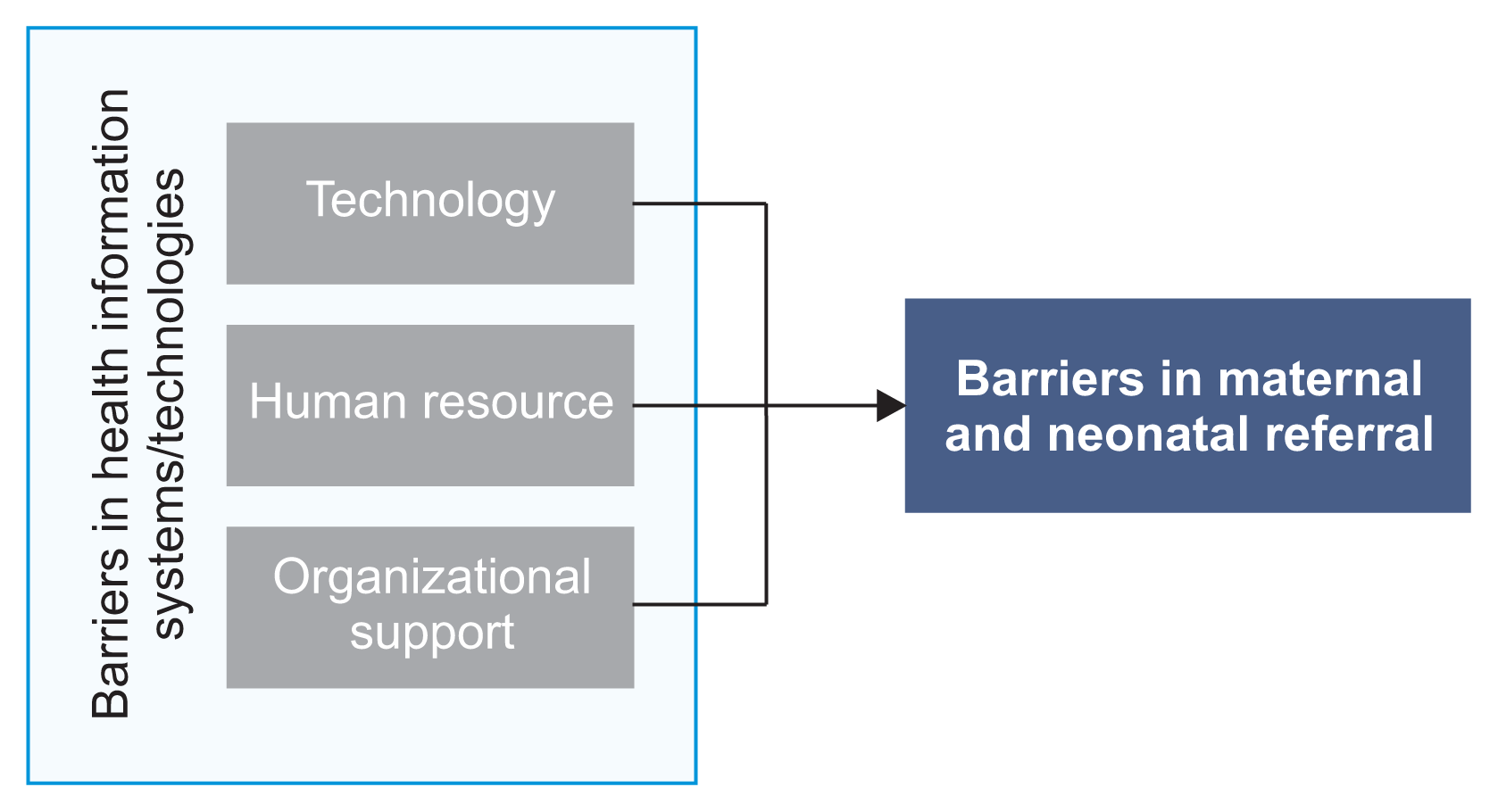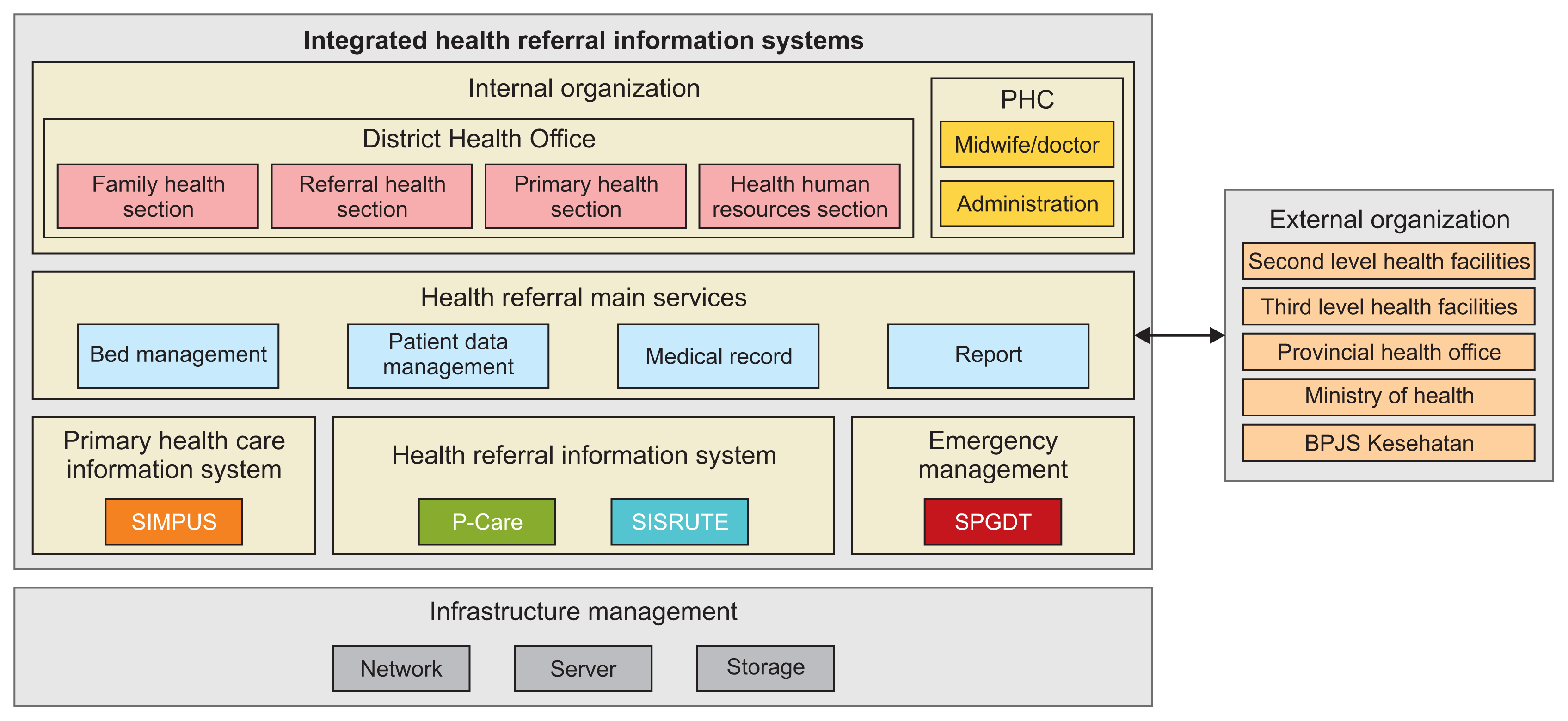1. Murray SF, Pearson SC. Maternity referral systems in developing countries: current knowledge and future research needs. Soc Sci Med. 2006; 62(9):2205–15.

2. Harahap NC, Handayani PW, Hidayanto AN. Barriers and technologies of maternal and neonatal referral system in developing countries: a narrative review. Informatics in Medicine Unlocked. 2019; 15:100184.

3. Gance-Cleveland B, Leiferman J, Aldrich H, Nodine P, Anderson J, Nacht A, et al. Using the technology acceptance model to develop StartSmart: mHealth for screening, brief intervention, and referral for risk and protective factors in pregnancy. J Midwifery Womens Health. 2019; 64(5):630–40.
4. Battle JD, Farrow L, Tibaijuka J, Mitchell M. mHealth for Safer Deliveries: a mixed methods evaluation of the effect of an integrated mobile health intervention on maternal care utilization. Healthc (Amst). 2015; 3(4):180–4.

5. Martinez B, Ixen EC, Hall-Clifford R, Juarez M, Miller AC, Francis A, et al. mHealth intervention to improve the continuum of maternal and perinatal care in rural Guatemala: a pragmatic, randomized controlled feasibility trial. Reprod Health. 2018; 15(1):120.

6. Walsham G. Health information systems in developing countries: some reflections on information for action. Inf Technol Dev. 2020; 26(1):194–200.

7. Jawhari B, Keenan L, Zakus D, Ludwick D, Isaac A, Saleh A, et al. Barriers and facilitators to Electronic Medical Record (EMR) use in an urban slum. Int J Med Inform. 2016; 94:246–54.

8. Sahay S, Nielsen P, Latifov M. Grand challenges of public health: How can health information systems support facing them? Health Policy Technol. 2018; 7(1):81–7.

9. Handayani PW, Pinem AA, Azzahro F, Hidayanto AN, Ayuningtyas D. The information system/information technology (IS/IT) practices in the Indonesia health referral system. Inform Med Unlocked. 2019; 17:100263.

10. Mahendradhata Y, Trisnantoro L, Listyadewi S, Soewondo P, Marthias T, Harimurti P, et al. The Republic of Indonesia health system review. Geneva, Switzerland: World Health Organization;2017.
11. Jahn A, De Brouwere V. Referral in pregnancy and childbirth: concepts and strategies. Safe motherhood strategies: a review of the evidence. Stud HSO&P. 2001; 17:225–42.
13. Sofiah , Habsari SK, Sumardiyono . The effectiveness and perception of ICT program implementation in enhancing maternal and newborn survival among pregnant women in Indonesian society. In : Proceedings of the 3rd International Conference on Social and Political Science; 2016 Nov 2–3; Central Java, Indonesia. p. 160–9.
14. Handayani PW, Pinem AA, Munajat Q, Azzahro F, Hidayanto AN, Ayuningtyas D, et al. Health referral enterprise architecture design in Indonesia. Healthc Inform Res. 2019; 25(1):3–11.

15. Minister of Health of the Republic of Indonesia. Regulation of the Minister of Health of the Republic of Indonesia Number 97 of 2014 concerning health services before pregnancy, pregnancy, childbirth, and postpartum, contraceptive services and sexual health services [Internet]. Jakarta, Indonesia: Minister of Health of the Republic of Indonesia;2014. [cited at 2021 Apr 10]. Available from:
https://www.kebijakanaidsindonesia.net/id/dokumen-kebijakan?task=download.send&id=644&catid=17&m=0
.
16. South Tangerang District Health Office [Internet]. Kota Tangerang Selatan, Indonesia: South Tangerang District Health Office;c2017. [cited at 2021 Apr 10]. Available from:
https://dinkes.tangerangselatankota.go.id/
.
17. Bengtsson M. How to plan and perform a qualitative study using content analysis. NursingPlus Open. 2016; 2:8–14.

18. Afrizal SH, Handayani PW, Hidayanto AN, Eryando T, Budiharsana M, Martha E. Barriers and challenges to Primary Health Care Information System (PHCIS) adoption from health management perspective: a qualitative study. Inform Med Unlocked. 2019; 17:100198.

21. Minister of Health of the Republic of Indonesia. Regulation of the Minister of Health of the Republic of Indonesia Number 19 of 2016 concerning an integrated emergency response system [Internet]. Jakarta, Indonesia: Minister of Health of the Republic of Indonesia;2016. [cited at 2021 Apr 10]. Available from:
https://peraturan.go.id/peraturan/view.html?id=11e6b62f8f2449608185313233303036
.
22. Handayani PW, Saladdin IR, Pinem AA, Azzahro F, Hidayanto AN, Ayuningtyas D. Health referral system user acceptance model in Indonesia. Heliyon. 2018; 4(12):e01048.

24. Sutiono AB, Qiantori A, Prasetio S, Santoso H, Suwa H, et al. Designing an emergency medical information system for the early stages of disasters in developing countries: the human interface advantage, simplicity and efficiency. J Med Syst. 2010; 34(4):667–75.

25. Wahid F, Dirgahayu RT, Hamzah A, Setiaji H. When more is less: the case of disconnected information systems in Indonesian public health facilities. IOP Conf Ser Mater Sci Eng. 2018; 325:012017.

26. World Health Organization. Framework and standards for country health information systems. 2nd ed. Geneva, Switzerland: World Health Organization;2008.







 PDF
PDF Citation
Citation Print
Print



 XML Download
XML Download